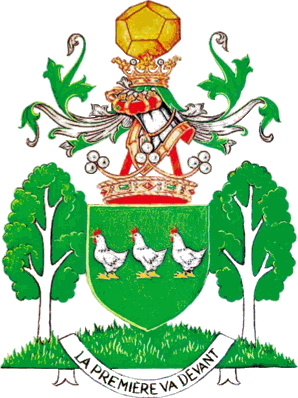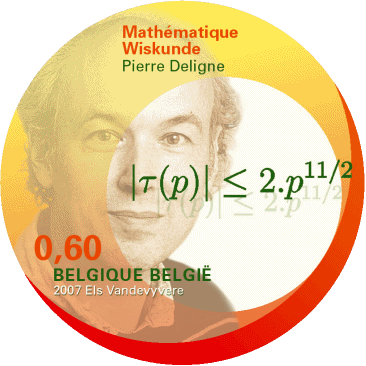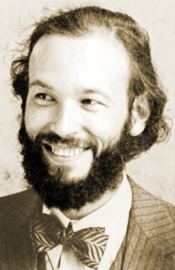Deligne is one of the greatest mathematicians of the twentieth century.
In 2006, Pierre René Deligne was ennobled by
Albert II,
King of the Belgians.
On that occasion, the new Vicomte Deligne
designed for himself the above coat of arms, which is inspired by the
following nursery rhyme (sing it to the tune of "Twinkle twinkle little star").
This rhyme is intended to teach children the meaning of a few simple words.
As such, it appears to adults as a succession of tautologies.
Deligne argues that mathematical discourse proceeds in much the same way...
Quand trois poules vont aux champs,
La première va devant,
La deuxième suit la première,
La troisième est la dernière.
Quand trois poules vont aux champs,
La première va devant.
| |
As three hens head for the fields,
The first one leads,
The second follows the first,
The third one is last.
As three hens head for the fields,
The first one leads.
|
At right is the original artwork for a Belgian stamp honoring Pierre Deligne.
The actual stamp
was issued in 2007 in a different denomination (0.70 instead of 0.60 euros).
The relation it features was conjectured by
Ramanujan
and proved
by Pierre Deligne in 1974. That inequality gives an upper bound, for
a prime argument (p)
of the absolute value of Ramanujan's
tau function
(A000594).
The tau function (t) is an important arithmetical
function which was proved to be
multiplicative
in 1917, by Louis J. Mordell (1888-1972).
It's best defined via its generating function :
| ¥ |
t(n) z n
= z |
¥ |
( 1-z k ) 24 |
|
| å |
Õ |
| n=0 |
k=1 |
|
|
= z
- 24 z2
+ 252 z3
- 1472 z4
|
+ 4830 z5
+ ...
|
Incidentally, this yields t(0) = 0
(which is how the range of any multiplicative function is always extended down to 0,
if one bothers to do so).
Pierre Deligne was born on October 3, 1944 in Etterbeek (Greater Brussels, Belgium).
After graduating from secondary school in 1962, he became a student
at the Free University of Brussels but managed to spend most of the academic year 1965-1966
as a pensionnaire étranger
at the Ecole Normale Supérieure in Paris (ENS, rue d'Ulm).
In 1967-68, Pierre Deligne was concurrently a junior scientist (aspirant)
at the Belgian FNRS and a guest at the
Institut des Hautes Études Scientifiques (IHES) at Bures-sur-Yvette (France)
where he worked under
Alexander Grothendieck (1928-2014).
Deligne received a doctorate from the University of Brussels in 1968 and also from the university of Paris Sud
(Orsay, located next to IHES). Pierre Deligne was awarded a French doctorat d'Etat in 1972.
On February 1970, Pierre Deligne became a permanent member of IHES.
Concurrently, he was a Member (1972-73, 1976-77) and Visitor
(1981-82) in the School of Mathematics at the Institute for Advanced Study
(IAS, Princeton, New Jersey). He was appointed to a faculty position there in September 1984
and transferred to Emeritus status in January 2008.
Pierre Deligne was awarded the
François Deruyts Prize from the Belgian Royal Academy in 1974,
the Henri Poincaré Medal from the French
Académie des Sciences in 1974, the
Dr. A. De Leeuw-Damry-Bourlart Prize
(Belgium's FNRS Prize) in 1975 and the
Fields Medal
in 1978.
He received the Crafoord
Prize in 1988
(jointly with Alexandre Grothendieck, who declined it).
He was awarded the
Balzan
Prize in 2004,
the Wolf
Prize in 2008 and, finally, the Abel prize in
2013.
[ Abel Prize Interview (1:08:41) ]
" [ From my Master, 



